If you are new to Product Feed Manager For WooCommerce (PFM), then the first thing to do is to learn to generate product feed before learning about all the other features of the plugin.
Here, you will learn how to generate a product feed to understand how it works, and I will show you how you can get the feed link or download the feed.
Later, on upcoming documentation, you will get instructions on using all the other exclusive features to make the feed proper and acceptable on your desired marketplaces.
So let’s take the first step.
Learn To Generate Product Feed #
Follow the steps below to create your first product feed.
1. Go to Dashboard > Product feed > Add New Feed
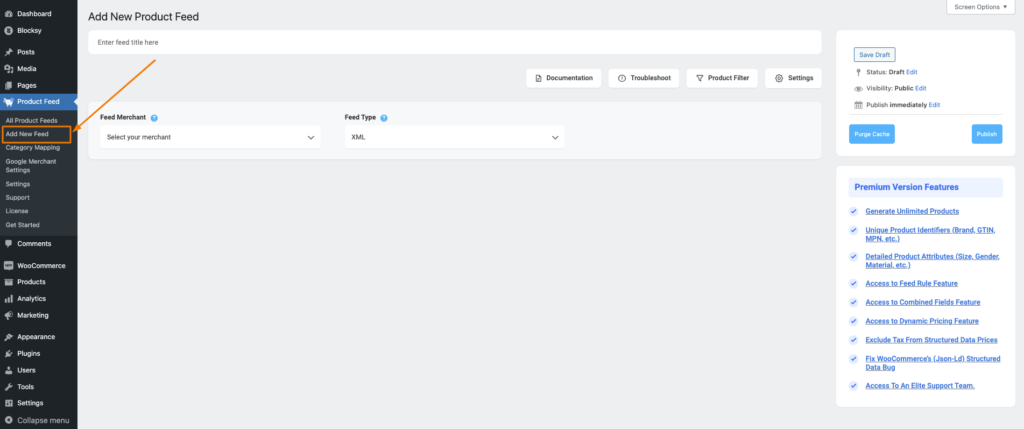
As you can see, it will take you to the page where you can start configuring a product feed.
2. On top, you will get the option to add a title to the feed.
3. Just under the title, you will see an option to select your preferred merchant. Simply click on the Feed Merchant dropdown button and select your preferred merchant from the dropdown or you can search in the dropdown box.
Select your preferred merchant and all the required attributes will be loaded below.
Let’s choose Google Shopping for this feed.
**Please note that Google Shopping only accepts XML feed submissions, so you will not get an option to choose the file format. However, for other merchants, you will get to choose a File Format next to the Feed Merchant option.
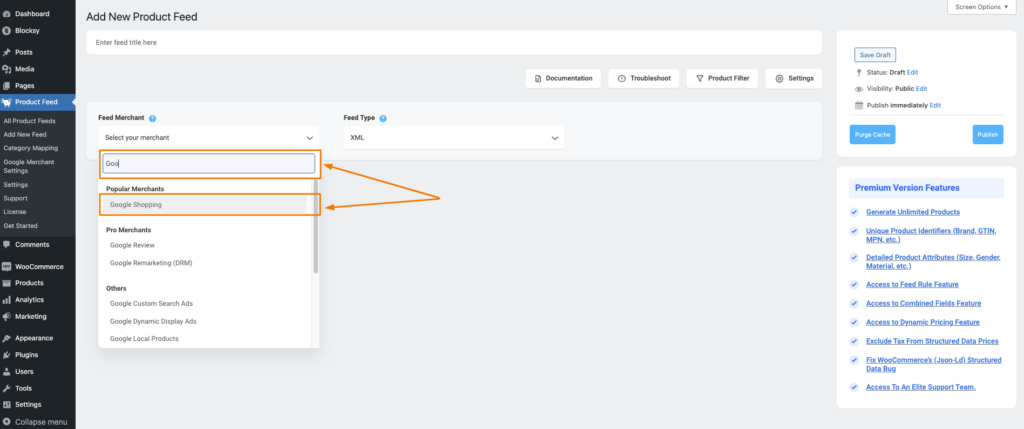
4. Once you select the merchant, all the mandatory fields required for submitting a product feed to the selected merchant will be listed below.
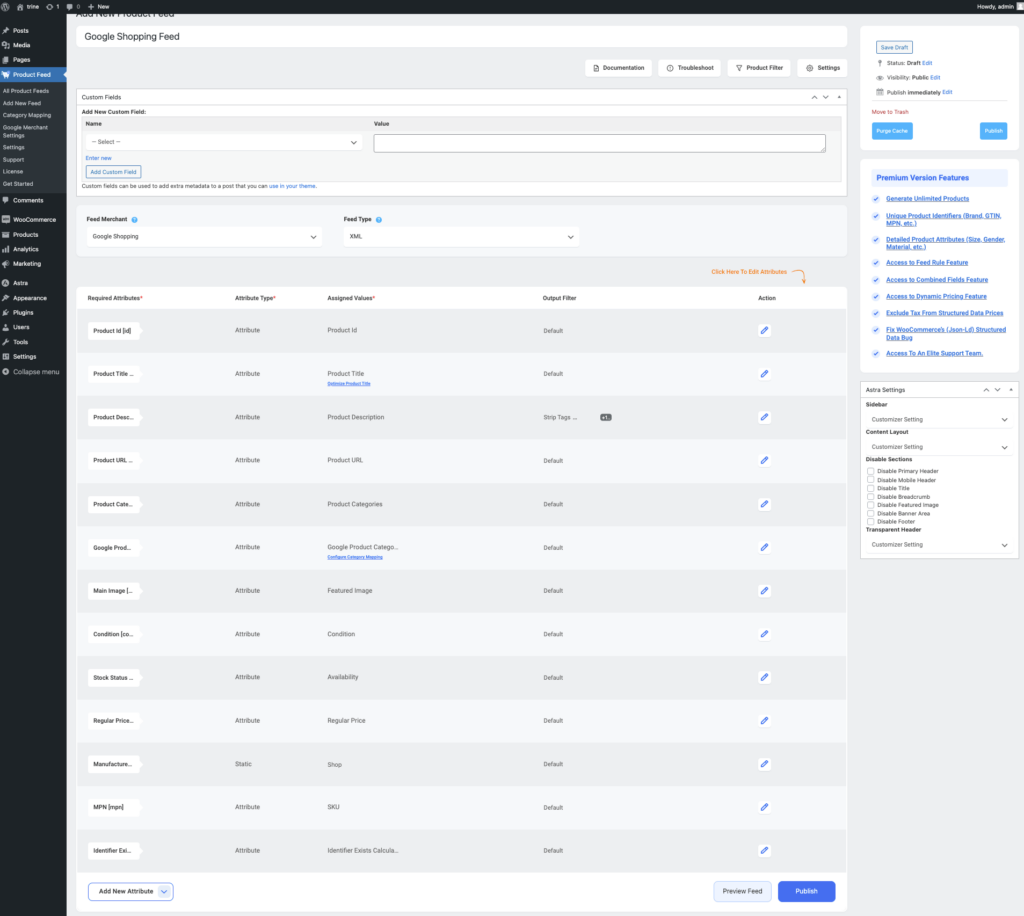
5. In most cases, this template is already configured and values are assigned properly, so you won’t have to do much work with this.
However, depending on the merchant you are generating a feed for, there may be some attributes for which you need to assign values manually.
Now, let us configure the features in the Product Settings. Click on the Product Settings button, and a drawer will open from the right side of the screen.
6. The first option you will see is Auto-Generate Your Feed.

This option is used to schedule an auto-update of the feed after certain intervals. Choose an option to set an auto-update or leave it as “No interval” if you do not want to set an auto-update of the feed.
7. Then, see the options to select your Country and Tax.
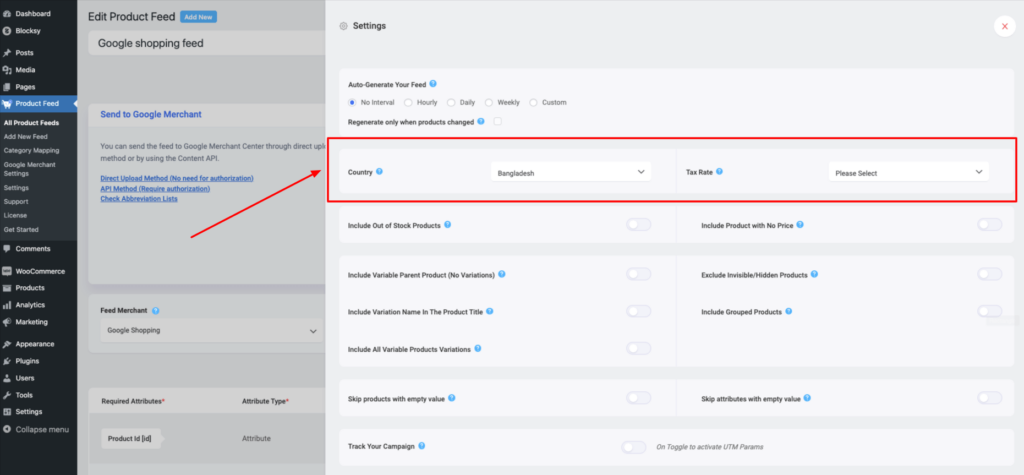
8. Next, use the following options as needed.
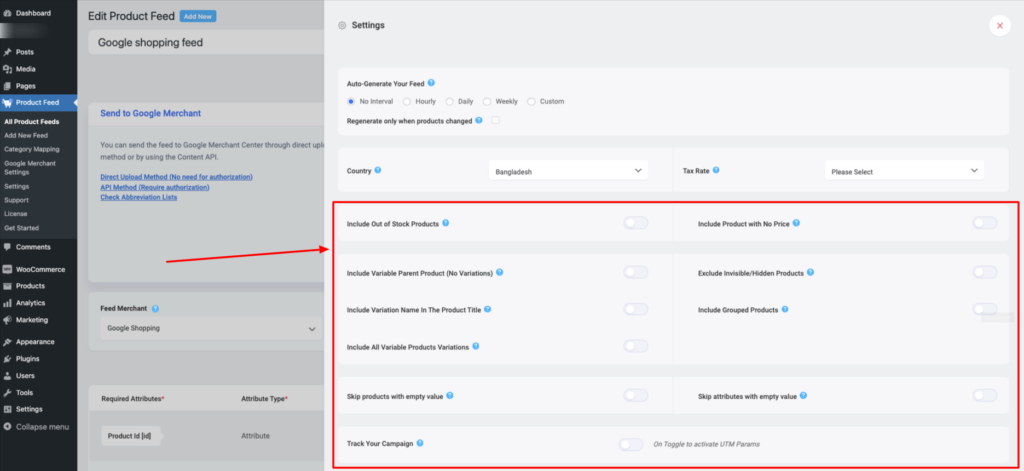
- Include Out of Stock Products
– If you want to include the out-of-stock products, then you can enable the option.
– For this feed, let’s not use this option and keep its value as “No“. - Include Product With No Price
– This option will include/exclude products with no regular price set or with a regular price zero (0)
– For this feed, let’s not use this option and keep its value as “No“.
- Include Variable Parent Product (No Variations)
– If you want to include the parent feed for variable products, then you can enable the option.
– Few merchants such as Google Shopping or Facebook don’t require you to submit parent products, however, there are many other merchants such as eBay MIP, that require you to submit product products in the feed.
– For this feed, let’s not use this option and keep its value as “No“. - Exclude Invisible/Hidden Products
– You might have certain products on your store that are marked as hidden or invisible on WooCommerce.
– If you want to generate feed for Simple products only, then you can mark this option as “Yes” to exclude invisible products from the feed.
– However, product variants are by default marked as Invisible on WooCommerce. So if you include variable products to the feed, then you should mark this as “No“.
– Since in this feed we are including product variants, so we will not use this feature and keep it as “No“. - Include the Variation Name In The Product Title
– Few merchants such as Google Shopping, suggest you add the variation term to the Product name in case you are uploading variable products, however, it is completely optional.
– So if you want to include the variant terms to the variable product names, then you can set its value as “Yes“.
– Let’s use this feature, and mark it as “Yes“, for this feed. - Include Grouped Product
– If you have Grouped Products, then it’s best to submit the parent product of the Grouped product you created.
– So you should mark this option as “Yes“.
- Include All Variable Products Variations
– If you want to only include simple products to the feed and no variable products, then keep its value as “No“.
– If you want to submit both simple products and variable products to Google Shopping, then choose its value as “Yes“.
– Let’s use this feature, and mark it as “Yes“, for this feed. - Skip Products with empty value
– Enabling this feature will remove products if there is a single attribute with empty value
– For this feed, let’s not use this option.
- Skip attributes with empty value
– Enabling this feature will exclude any attributes of a product if the attribute value is missing.
– For this feed, let’s not use this option. - Track Your Campaign
– You can then find an option to add Track Your Campaign. By enabling it you can keep track of the product’s performance.
– For this feed, let’s not use this option.
9. Now, close the drawer and click on the Product Filter option. A new drawer will open from the right.
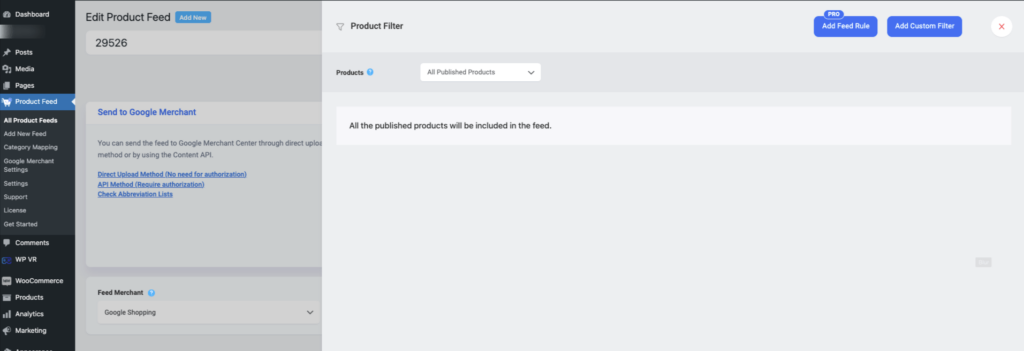
Click on the dropdown, and You will get the following options:
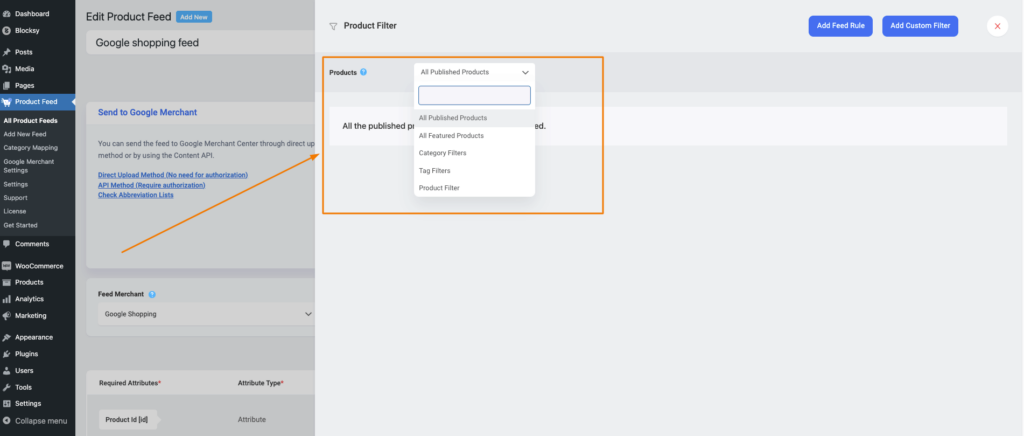
Choose the Products you want to include in the feed.
You may choose to include All Published Products in your store, or you may use one of the three filter options, Custom Filter, Category Filter, and Tag Filter, to include the products you require (or exclude the ones you do not want to include).
For the first feed, let us choose All Published Products.
10. Now, scroll up and Publish the feed.
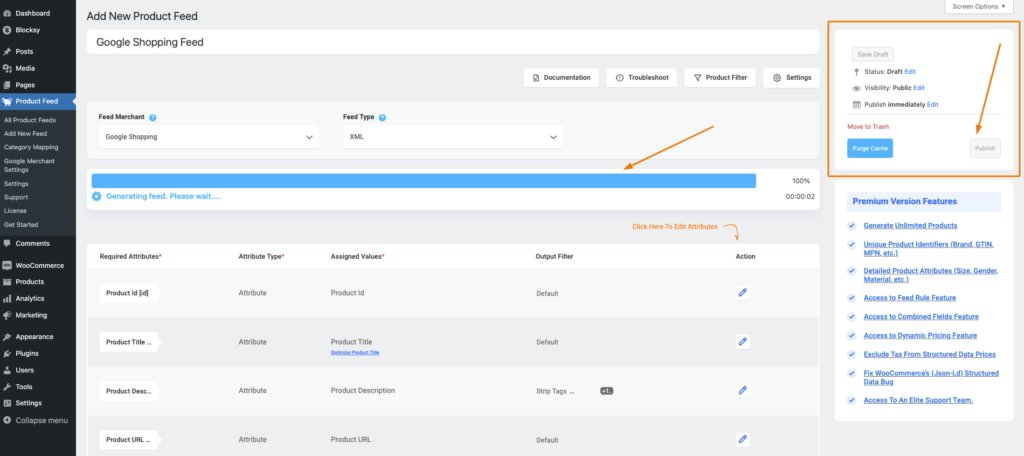
You will see a progress bar.
11. Once complete, the page will reload, and you will find the Feed link or download button just below the Update button.
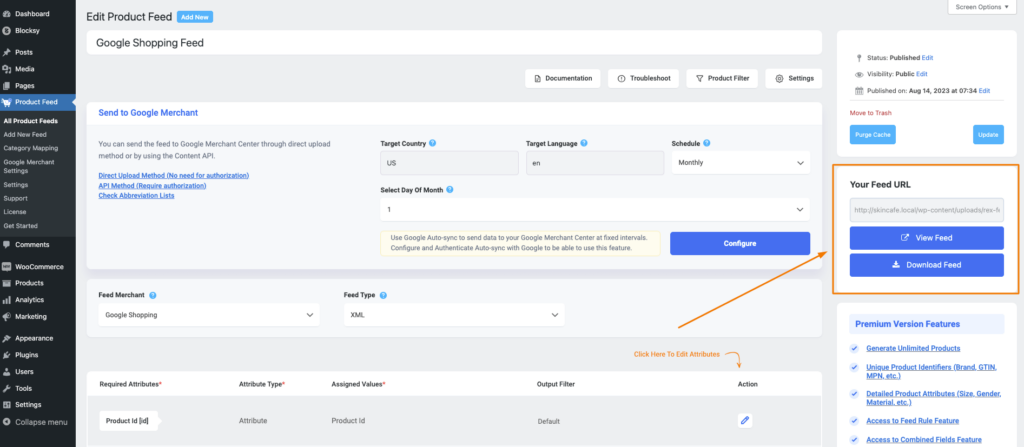
**In case you don’t see the feed link section, go to the Screen Options and enable the visibility of the Feed URL section.
That’s it. You have generated your first feed. You can use the link or download the file to upload the products to your desired marketplace.
Collecting Feed Link Or Editing A Published Feed #
If you have created feeds, they will be listed under Dashboard > Product Feed > All Product Feeds.

Here, you will be able to collect the feed link, download the feed, or edit the feed.
Now that you are familiar with how the feed generation process works, now let’s take a quick overview of the plugin, and then we can move on to learn about all the useful features and create a complete product feed that can be uploaded successfully on your desired marketplaces.